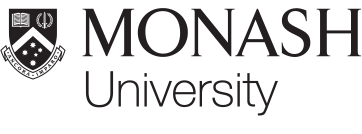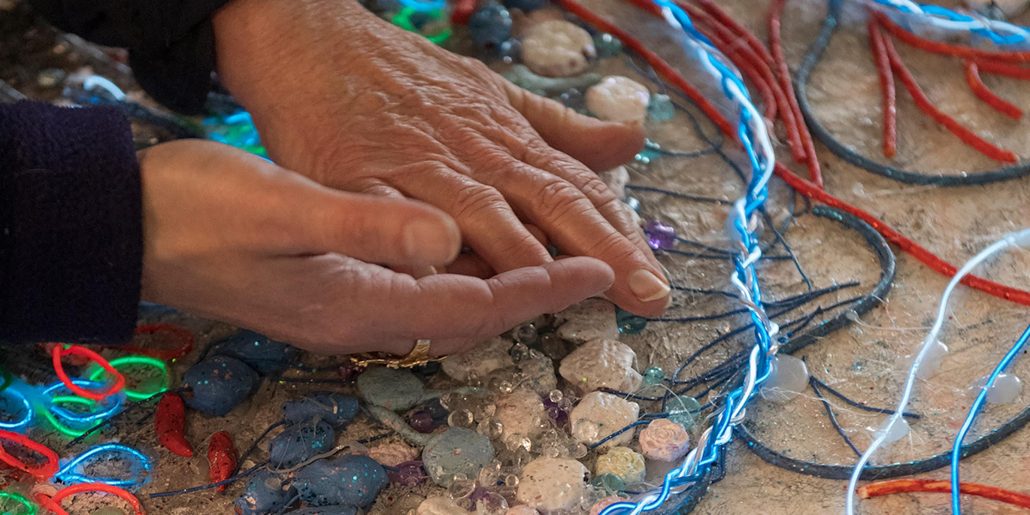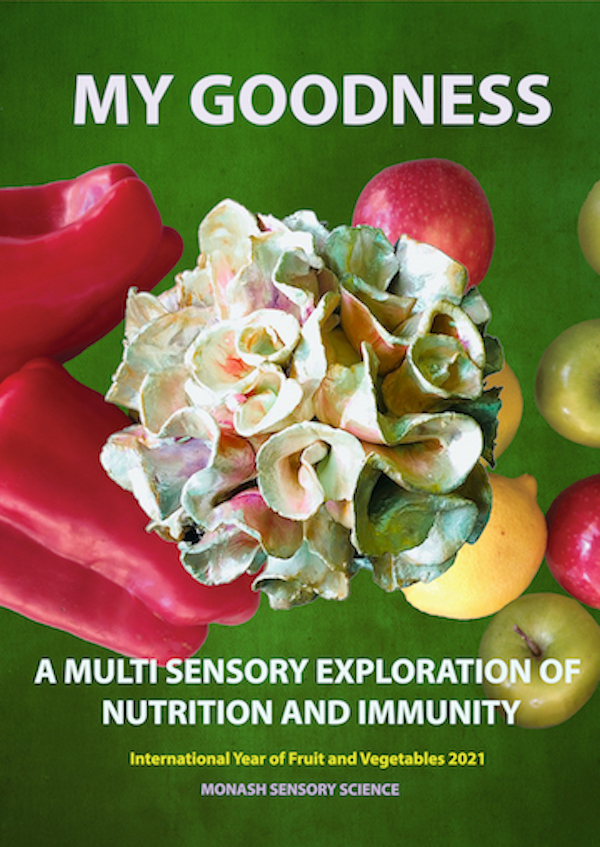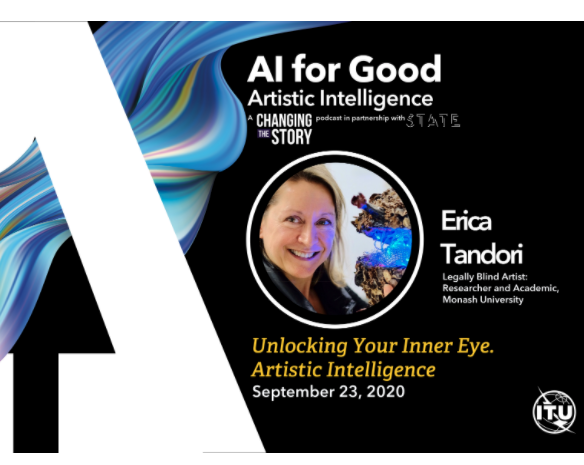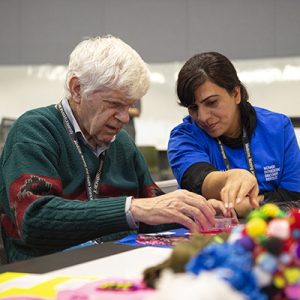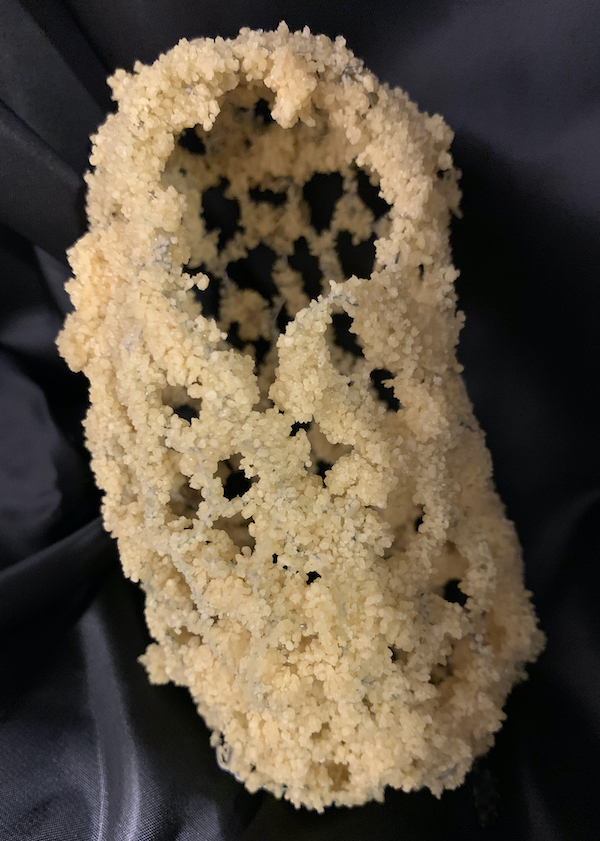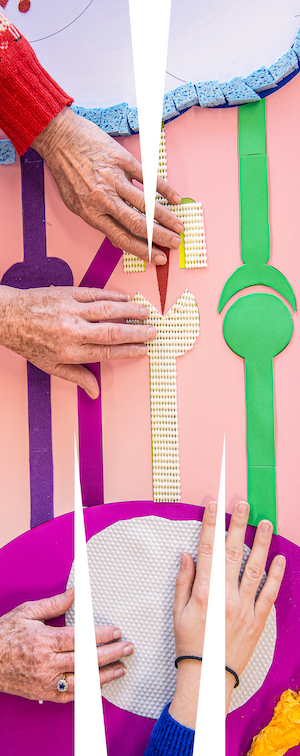
In 2017, Professor Jamie Rossjohn developed scientific outreach activities that embrace those in the community that are disadvantaged; namely he engaged the National Disability Network/Job Access/Vision Australia to employ people in his laboratory with disabilities. Within this initiative, Jamie has employed a project officer/artist in residence, Erica Tandori.
Erica is a legally blind artist, researcher and academic, exploring the intersection between art, vision loss and science. She was diagnosed with a form of juvenile macular dystrophy at the age of 23, while in her first year of art school. Erica’s PhD focused on capturing the entoptic effects of macular dystrophy through art, conveying an ‘eye-witness’ account of blindness.
As artist in residence, she is generating tactile displays and multi-sensory, multimodal artworks that makes science including Jamie’s research accessible to the low vision and blind community. Jamie and Erica have hosted a number of Sensory Science exhibitions nationally covering the fields of immunity, vision and cancer.
The Monash Sensory Science team have been recognised for their contributions to Diversity and Inclusion: Winner of the Monash University 2018 Vice-Chancellor’s Diversity and Inclusion Award, Finalist of the Department of Industry, Innovation and Science Eureka Prize for STEM Inclusion 2019, 2020 Breakthrough of the Year Finalist at the Falling Walls Conference and Berlin Science Week; and recently the ‘Highly commended’ Award in the Design strategy of 2023 Victorian Premier’s Design Awards.
Read coverage of this work:
- The Age: Science relies on light. What about people who can’t see?
- The ARC: Australian Laureate Fellow launches Sensory Scientific Exhibition and Discovery day
- The BDI: Bringing the magic of biomedical research to the low vision community
- ASBMB (USA): Unravelling the mind’s eye – science through a novel lens
- Immunology & Cell biology: Access all areas: multisensory science exhibitions tailored toward blind, low-vision and diverse-needs communities
- BBC: Cambridge university sensory-science art for people with sight loss
- The Australian: Art, internships open biomedicine to visually impaired
Read publications on this work:
-
- Cell: Advancing accessible science for low-vision and diverse-needs communities. DOI: 10.1016/j.cell.2024.05.020
- Immunology & Cell Biology: Making science accessible for blind and low-vision people, and those with diverse needs. DOI: 10.1111/imcb.12760
- Immunology & Cell Biology: Access all areas: multisensory science exhibitions tailored toward blind, low-vision and diverse-needs communities. DOI: 10.1111/imcb.12738
We will be expanding these Sensory Science exhibitions and bringing them to schools and internationally. If you are interested in having us come to your school or assist with setting up something similar at your institute, please send us an enquiry at Contact Us.
Watch videos below of our Sensory Science exhibitions as we create multi-sensory and multimodal artworks to communicate current biomedical research to blind, low vision and diverse needs audiences.
